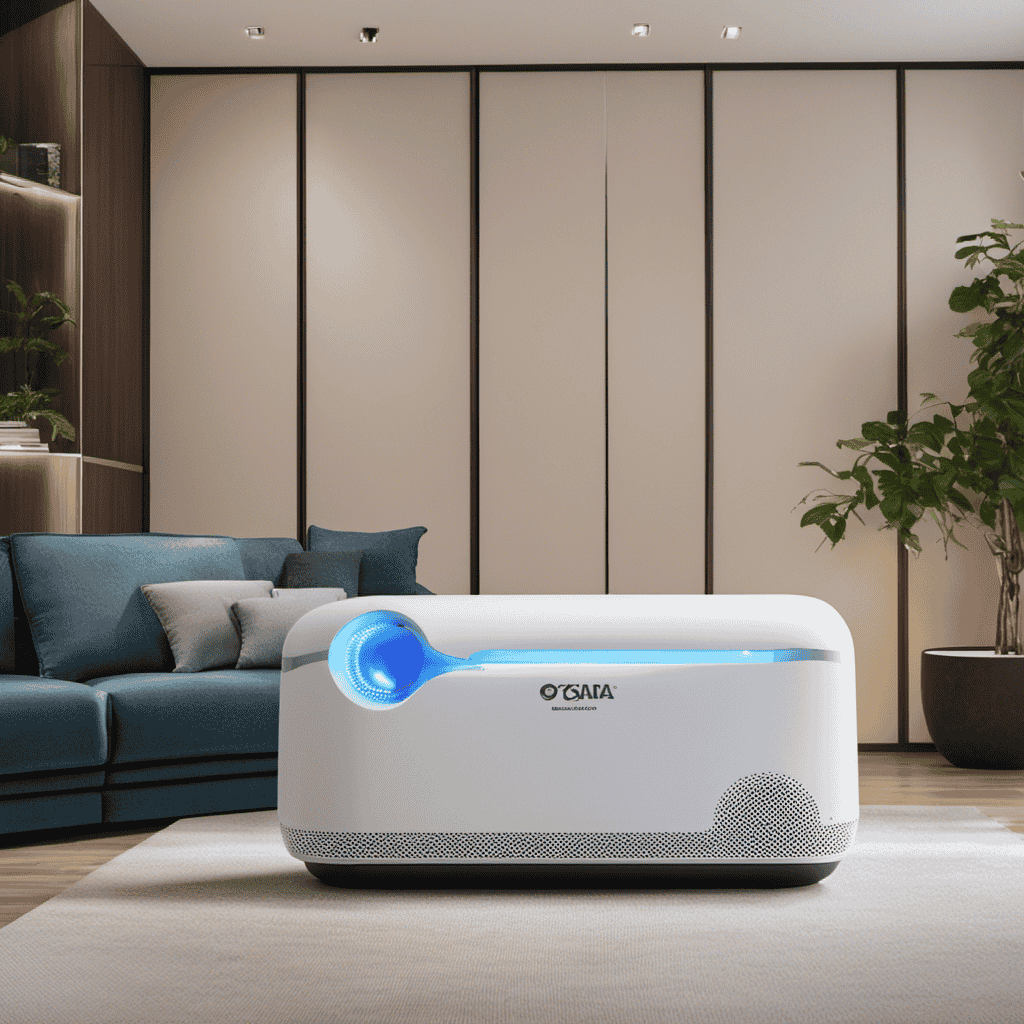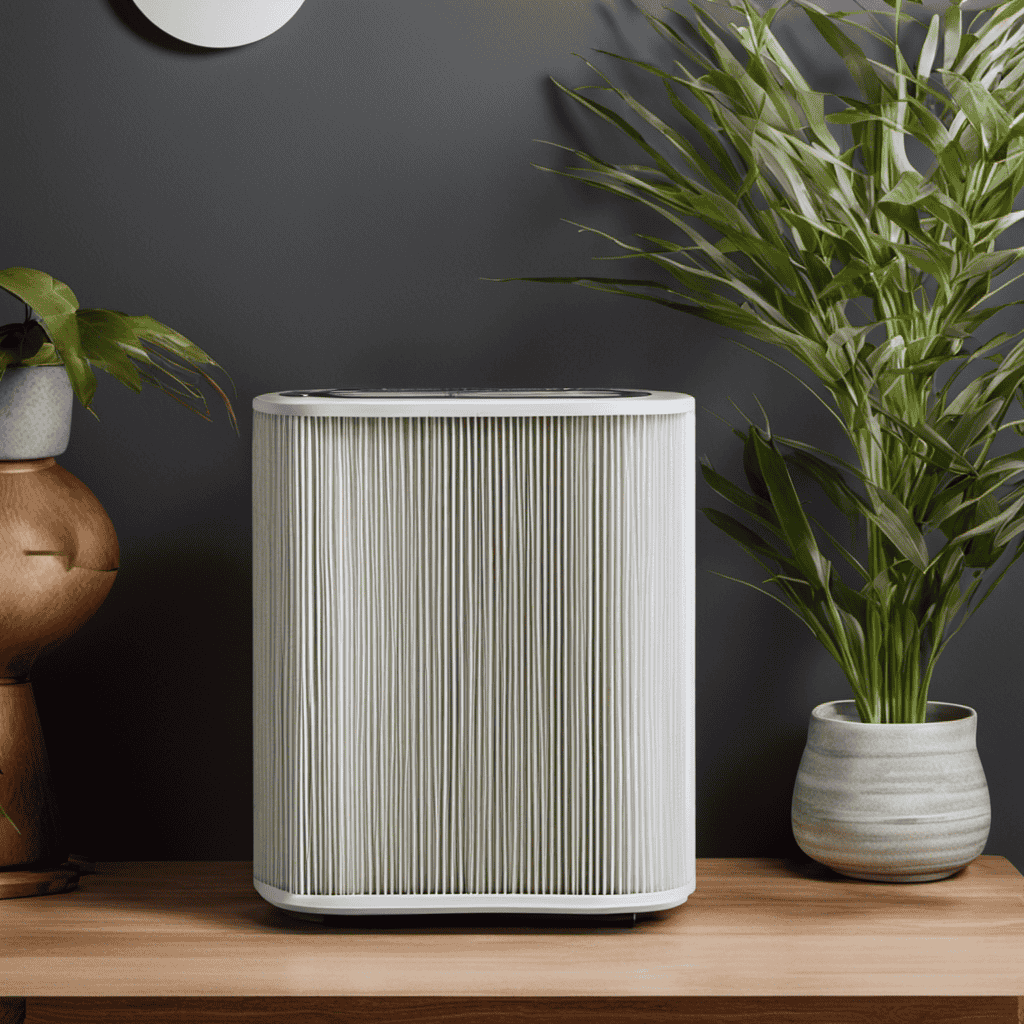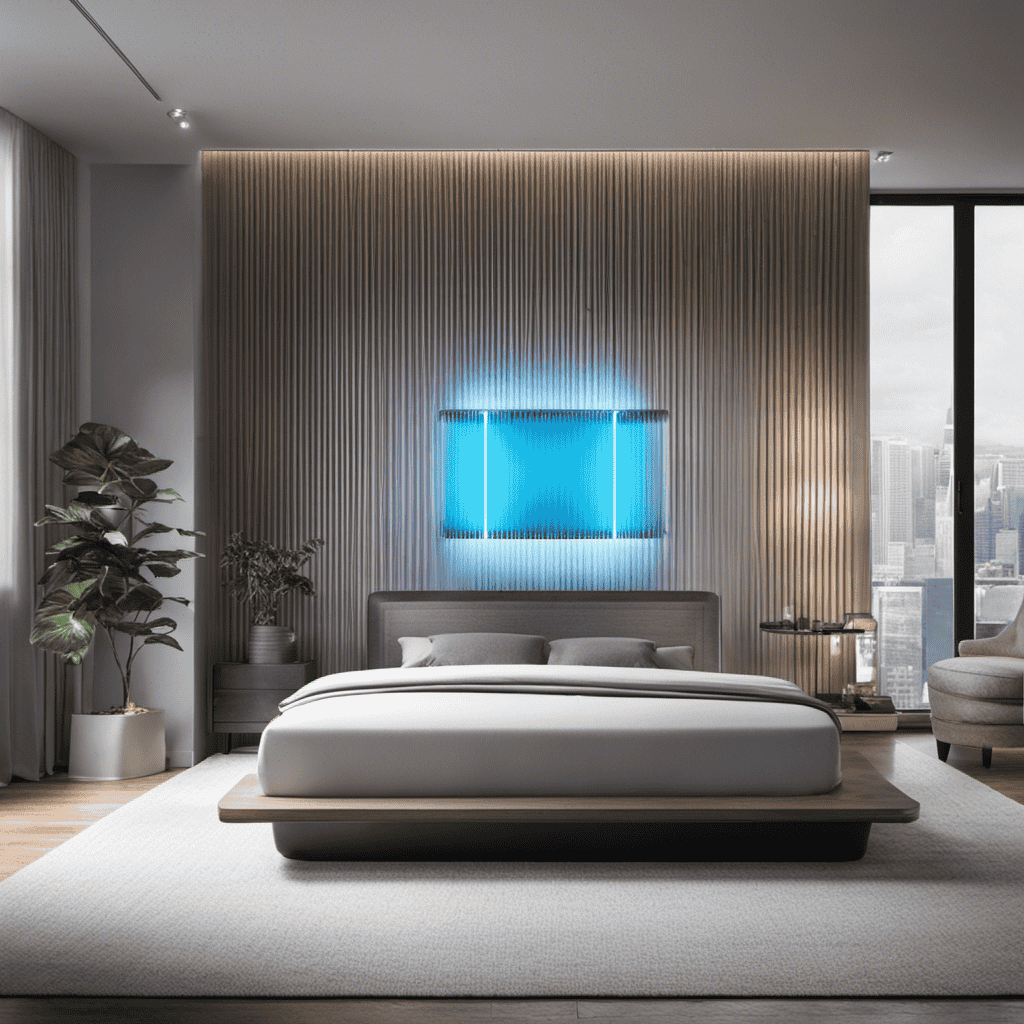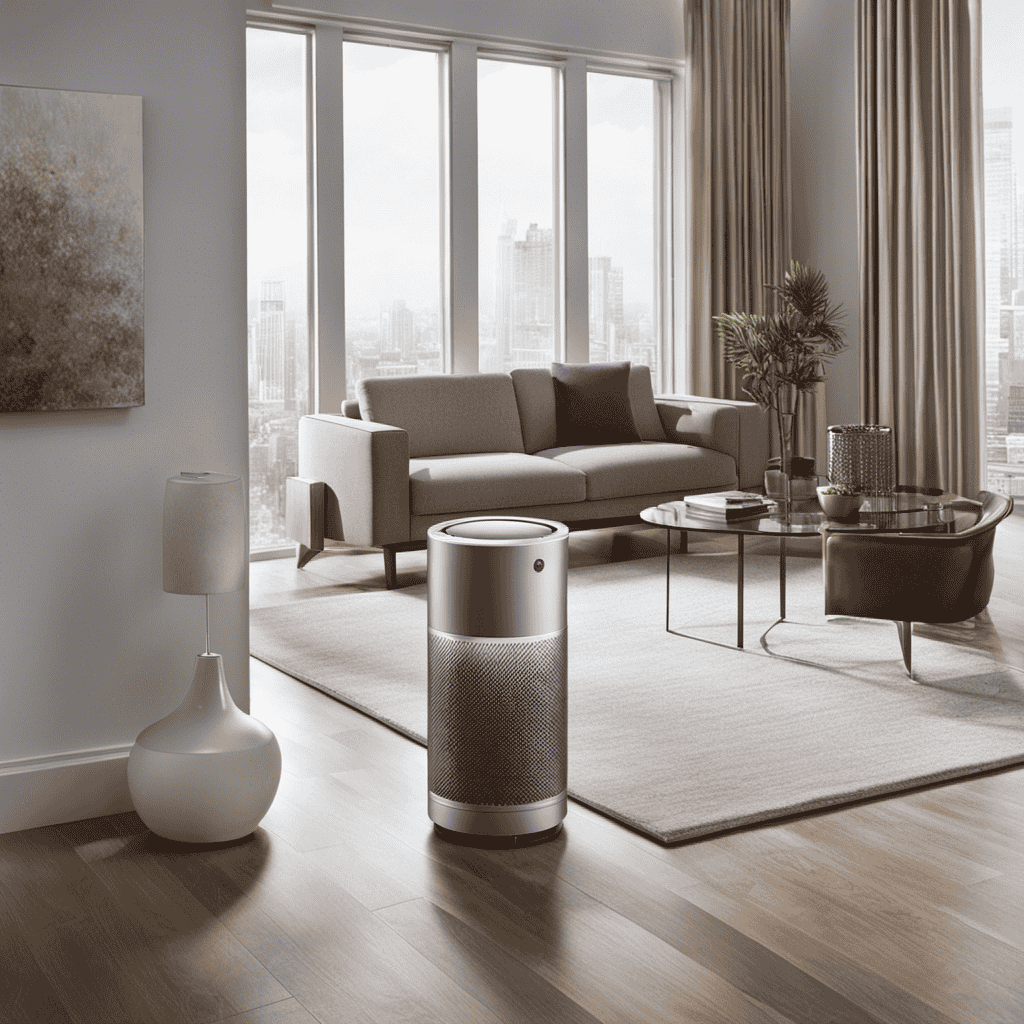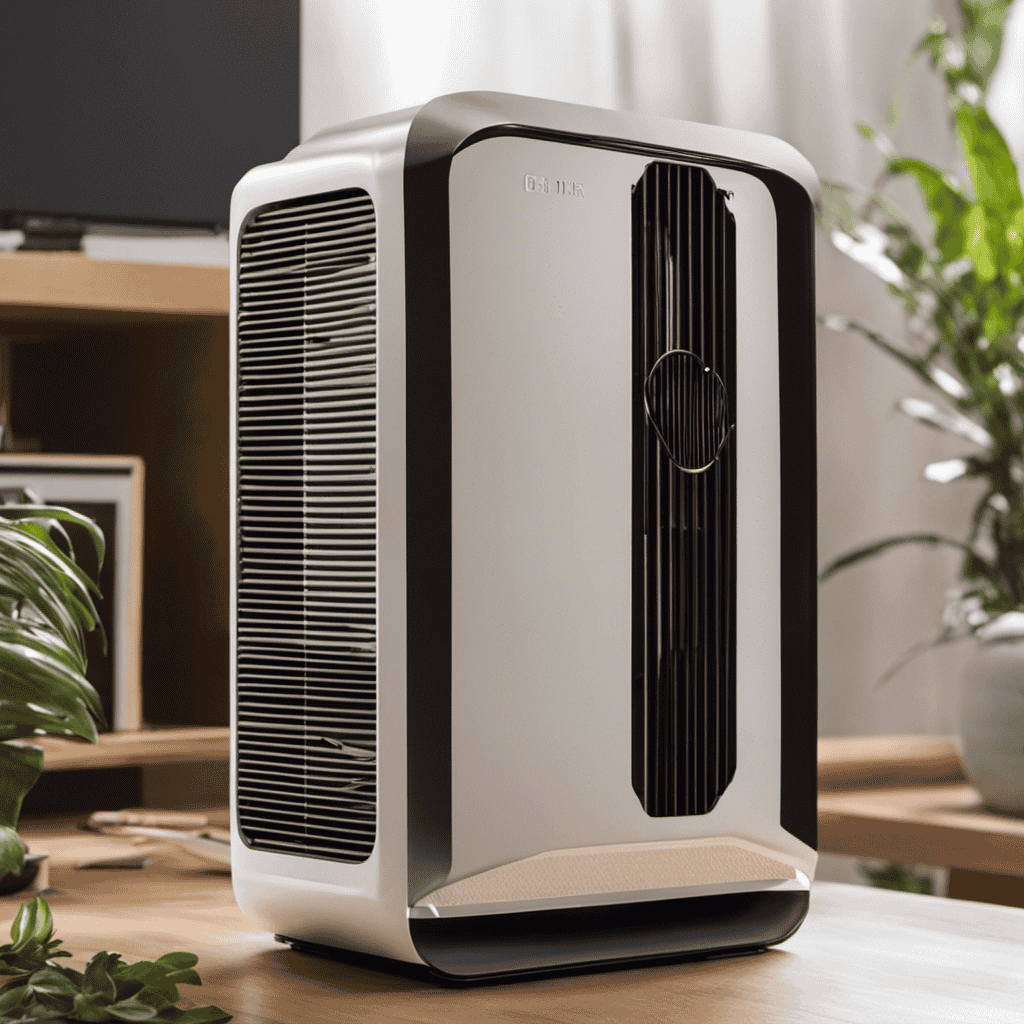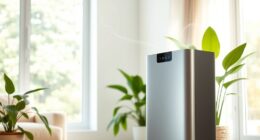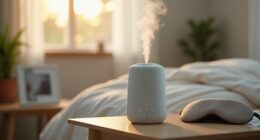I adore the sensation of having fresh, clean air in my house. That’s the reason I decided to purchase a plasma air purifier.
But understanding the certification label on these devices can be a bit overwhelming. That’s where this article comes in. I’ll guide you through the process of decoding the testing standards, analyzing the filtration efficiency, and evaluating the certification authority.
With this knowledge, you’ll be able to confidently read and interpret a plasma air purifier certification.
So let’s dive in and demystify these labels together.
Key Takeaways
- Higher certification level does not always mean better air purification
- The manufacturer’s information helps assess the quality and suitability of the air purifier
- Understanding the testing standards and comparing different testing methods is important in making informed decisions
- Different certification labels have different testing requirements and standards, so it’s important to research and understand specific requirements before purchasing
Understanding the Certification Label
Understanding the certification label is essential when reading a plasma air purifier certification. Many people have misconceptions about what the label means and how it relates to the performance of the air purifier. Let me debunk some of these air purifier myths and help you identify common misconceptions.
Firstly, one common misconception is that a higher certification level automatically means better air purification. While higher certification levels do indicate a higher level of performance, it does not necessarily mean that it is the best option for your specific needs. It is important to consider factors such as room size, air quality, and your specific concerns when choosing an air purifier.
Secondly, some people believe that all plasma air purifiers are the same. This is not true. Each air purifier goes through a specific certification process, and the label provides valuable information about the technology used, the efficiency of the filtration system, and the level of noise it produces.
Identifying the Manufacturer Information
You can easily find the manufacturer information on the certification label. This label contains crucial details about the plasma air purifier, including the manufacturer’s name, contact information, and other essential product specifications.
When you look at the label, you’ll see:
- The manufacturer’s name prominently displayed at the top, ensuring their branding is easily identifiable.
- Contact information such as a phone number or website, allowing you to reach out for any inquiries or support.
- Product specifications listed in a concise manner, providing vital details about the air purifier’s performance, features, and capabilities.
These elements help you identify the manufacturer and gain a deeper understanding of the plasma air purifier’s specifications. By referencing this information, you can make informed decisions about the product’s quality and suitability for your needs.
Decoding the Testing Standards
When it comes to understanding the testing standards for air purifiers, there are a few key points to consider.
First, industry testing requirements play a crucial role in determining the effectiveness and safety of these devices.
Second, it is important to familiarize yourself with certification labels, as they provide valuable information about the product’s performance.
Lastly, comparing different testing methods can help you make an informed decision when selecting an air purifier that meets your specific needs.
Industry Testing Requirements
To properly evaluate a plasma air purifier certification, start by familiarizing yourself with the industry testing requirements. These requirements are established by industry regulations and ensure that the air purifiers meet certain standards of performance. The testing procedures are designed to simulate real-life conditions and assess the effectiveness of the purifiers in removing various pollutants from the air.
Here are three sub-lists that will help you understand the industry testing requirements:
-
Emission testing: This involves measuring the levels of harmful gases and particles emitted by the air purifier. This test ensures that the purifier does not release any harmful substances into the air.
-
Efficiency testing: This evaluates the ability of the purifier to remove pollutants such as dust, pollen, and smoke from the air. The purifier is tested in different scenarios to determine its effectiveness in various environments.
-
Noise testing: This assesses the noise level produced by the purifier during operation. It ensures that the purifier operates at an acceptable noise level, providing a quiet and comfortable environment.
Understanding Certification Labels
Understanding the different certification labels can help you determine the effectiveness of a plasma air purifier.
In the market, there are various certifications that claim to validate the performance of these devices. However, it is important to be aware of common misconceptions and debunk certification myths.
One common misconception is that all certification labels guarantee the same level of effectiveness. This is not true. Different labels have different testing requirements and standards, and understanding these differences is crucial.
Some certifications focus on particle removal efficiency, while others focus on VOC (volatile organic compounds) reduction. By identifying the key criteria for each certification label, you can make an informed decision about which plasma air purifier is best suited for your needs.
It’s important to research and understand the specific requirements behind each certification label before making a purchase.
Comparing Different Testing Methods
One way to compare different testing methods is by researching the key criteria for each certification label. When evaluating effectiveness standards, it’s important to consider the testing accuracy of the methods used.
Here are three aspects to consider when comparing testing methods:
-
Testing Equipment: The type of equipment used can greatly impact the accuracy of the results. Look for certifications that require the use of reliable and calibrated testing equipment.
-
Testing Procedures: The procedures followed during the testing process can also affect the accuracy of the results. Certifications that outline detailed and standardized testing procedures are more likely to provide reliable data.
-
Sample Size: The size of the sample tested can influence the accuracy of the results. Look for certifications that specify a large enough sample size to ensure representative data.
Interpreting the Emission Levels
Take a look at the emission levels on the plasma air purifier certification to understand how it performs. When evaluating the performance of a plasma air purifier, measuring the effectiveness of its emissions is crucial.
The emission levels indicate the amount of pollutants released into the air after purification. These levels are typically measured in parts per million (ppm) or micrograms per cubic meter (µg/m^3). Lower emission levels indicate a more efficient purifier, as it means fewer pollutants are being reintroduced into the air.
It’s important to compare these emission levels with the recommended safety standards to ensure the purifier meets the necessary criteria. Understanding the emission levels is just the first step in assessing the effectiveness of a plasma air purifier.
Now, let’s delve into analyzing the filtration efficiency to get a complete picture.
Analyzing the Filtration Efficiency
To fully comprehend how well the plasma air purifier filters out pollutants, you should assess its filtration efficiency. The filtration effectiveness analysis is crucial in measuring the purification performance of the device.
Here are three key factors to consider when analyzing the filtration efficiency:
-
Filter Material: Imagine a dense web of fibers capturing airborne particles, like a net catching fish in a river.
-
Filter Size: Picture a gate with tiny openings, allowing only small particles to pass through while trapping larger ones.
-
Filter Design: Visualize a labyrinth of passages, forcing air to flow through multiple layers, maximizing contact with the filter material.
Recognizing the Ozone Output
In addition to analyzing the filtration efficiency of a plasma air purifier, it is important to recognize the ozone output of the device.
Ozone is a molecule that can be beneficial or harmful depending on its concentration.
Plasma air purifiers generate ozone as part of their purification process, but excessive ozone levels can pose health concerns and compromise indoor air quality.
It is crucial to ensure that the ozone output of a plasma air purifier is within safe limits to protect the well-being of individuals using the device.
Look for certifications that specify ozone safety standards and limits. These certifications provide assurance that the plasma air purifier has been tested and verified to emit safe levels of ozone.
Understanding the ozone output of a plasma air purifier is essential in making an informed decision about its suitability for your needs and the health of your environment.
Moving forward, let’s explore how to evaluate the certification authority for a plasma air purifier.
Evaluating the Certification Authority
When evaluating the certification authority for a product, it is crucial to consider their credibility and expertise in the field. This involves researching their background, qualifications, and any relevant experience they have in certifying similar products.
Additionally, transparency in the certification process is essential to ensure that the authority follows standardized procedures and maintains integrity throughout.
Understanding these key points will help consumers make informed decisions and trust the certifications provided by the authority.
Authority’s Credibility and Expertise
You can trust the authority’s credibility and expertise when evaluating a plasma air purifier certification. The authority’s reputation is built on years of experience and a track record of thoroughness in evaluating air purifiers.
When considering the authority’s credibility, imagine a team of experts meticulously analyzing every aspect of a plasma air purifier. They scrutinize the purifier’s performance, its ability to remove pollutants from the air, and its overall effectiveness. Picture them conducting rigorous tests in a controlled environment, measuring the purifier’s efficiency and ensuring it meets the highest standards.
Furthermore, the authority’s expertise shines through as they stay up to date with the latest advancements in air purification technology, allowing them to provide accurate and reliable certifications. With their reputation and certification process credibility, you can have confidence in their evaluations.
This trust is essential when understanding the certification process transparency.
Certification Process Transparency
Take a moment to consider how important it is to be fully informed about the transparency of the certification process. When it comes to certification process accuracy and certification labeling accuracy, understanding how the process works is crucial. Let me break it down for you:
| Stage of Certification Process | Description |
|---|---|
| Application | The manufacturer applies for certification by submitting relevant data and documentation. |
| Testing | Independent laboratories conduct rigorous tests on the product to evaluate its performance. |
| Evaluation | Experts review the test results and compare them against established standards. |
| Certification Decision | Based on the evaluation, a decision is made whether to grant or deny certification. |
| Labeling | If certification is granted, the product receives the appropriate labeling to indicate compliance. |
Frequently Asked Questions
Can I Use a Plasma Air Purifier in a Small Room?
Yes, you can use a plasma air purifier in a small room. It is beneficial because it helps maintain air quality by removing pollutants and allergens, improving the overall health and comfort of the space.
How Often Do I Need to Replace the Filters in a Plasma Air Purifier?
I replace the filters in my plasma air purifier every 6 months. It’s essential to maintain proper indoor air quality. Regular filter replacement ensures optimal performance and prolongs the lifespan of the purifier.
Are There Any Potential Health Risks Associated With Using a Plasma Air Purifier?
There may be potential health risks associated with using a plasma air purifier. It is important to compare the effectiveness of different models and consider any possible side effects before making a decision.
Can a Plasma Air Purifier Remove Odors From the Air?
Yes, a plasma air purifier can effectively remove odors from the air. This technology uses ionization to neutralize and eliminate odor-causing particles, providing the benefit of fresh and clean-smelling air.
Are Plasma Air Purifiers More Effective Than Other Types of Air Purifiers?
Plasma air purifiers have been proven to be more effective than other types of air purifiers in removing contaminants from the air. Their advanced technology allows for superior filtration and purification, providing cleaner and healthier indoor air.
Conclusion
In conclusion, understanding how to read a plasma air purifier certification is crucial in making an informed decision about the quality and effectiveness of the product. By decoding the testing standards, analyzing the filtration efficiency, and evaluating the certification authority, consumers can ensure that they are investing in a reliable and trustworthy air purifier.
For example, imagine a family with a young child suffering from asthma. By carefully reading the certification label and recognizing the low emission levels and high filtration efficiency, they can confidently choose a plasma air purifier that will provide clean and safe air for their child, alleviating their worries and improving their overall well-being.
